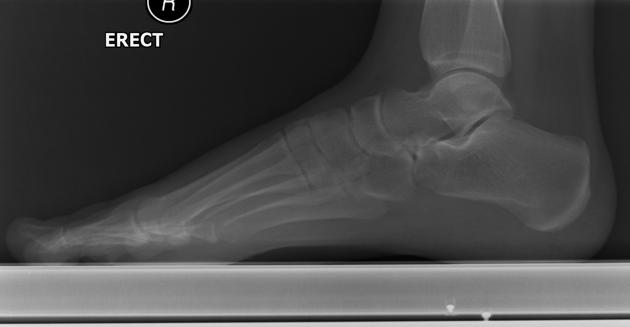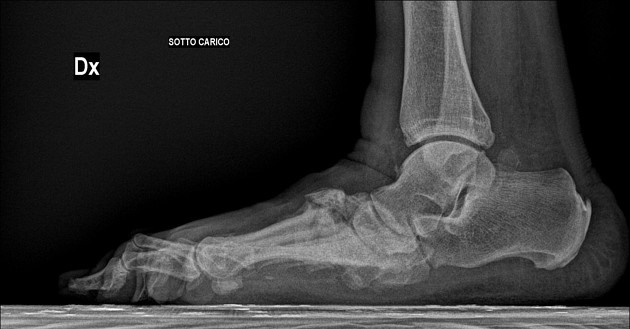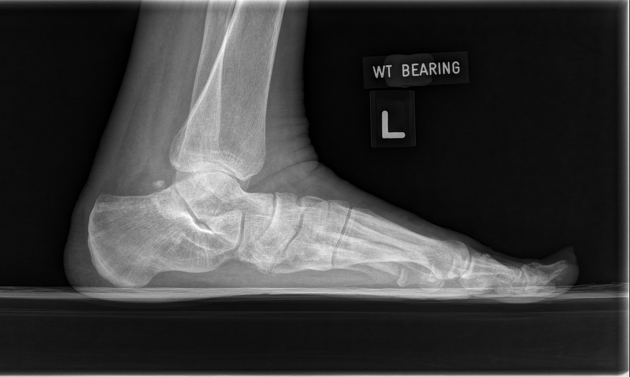The weight-bearing lateral foot radiograph is important in the assessment of foot alignment and the diagnosis of abnormalities that cause malalignment and foot pain. Nonweightbearing views (e.g. lateral foot) would be inadequate for the assessment of alignment as the bones of the feet are not in their functional state.
On this page:
Indications
This view is key to the assessment of foot alignment and the diagnosis of abnormalities causing malalignment and foot pain, i.e. Lisfranc injury. This view may also be crucial in determining the integrity of any functional joint prior to a partial foot amputation or corrective surgery for pes planus.
Patient position
- patient stands on a stable, raised radiolucent platform (e.g. using wooden blocks) that matches the x-ray tube's lowest height
- lateral aspect of foot is kept in contact with the detector
- patient applies weight on affected foot
- unaffected foot is lifted; if possible, the contralateral toes can be positioned posterior to the affected foot's calcaneus as counterbalance
Technical factors
- mediolateral projection
-
centering point
- base of metatarsals or midfoot
-
collimation
- anteriorly to skin margin of the distal phalanges
- posteriorly to skin margin of the calcaneus
- superior to the talocrural joint
-
orientation
- landscape
-
detector size
- 18 cm x 24 cm
-
exposure
- 55-60 kVp
- 3-4 mAs
-
SID
- 100 cm
-
grid
- no
Image technical evaluation
- 5th metatarsal tuberosity is seen in profile
- the superior aspect of the talar domes are superimposed
- tibiotalar joint is open
Useful measurements
- calcaneal pitch
- medial cuneiform-fifth metatarsal height
- lateral talocalcaneal angle
- lateral talo-first metatarsal angle
- lateral calaneo-first metatarsal angle
- first metatarsal declination angle
Practical points
With patient safety being first priority, ensure some support is provided for patients to hold onto as their affected injured foot may not be used to the applied pressure.








 Unable to process the form. Check for errors and try again.
Unable to process the form. Check for errors and try again.